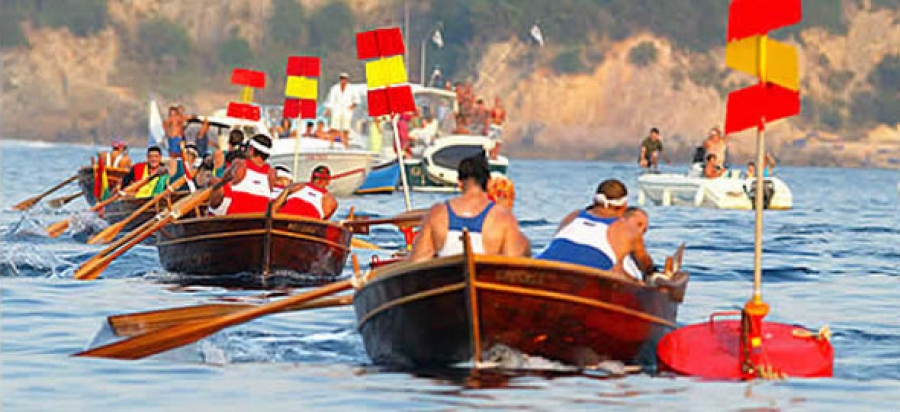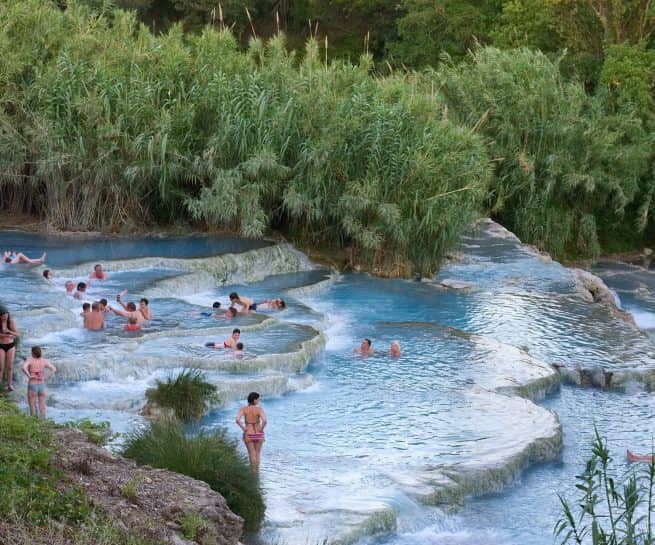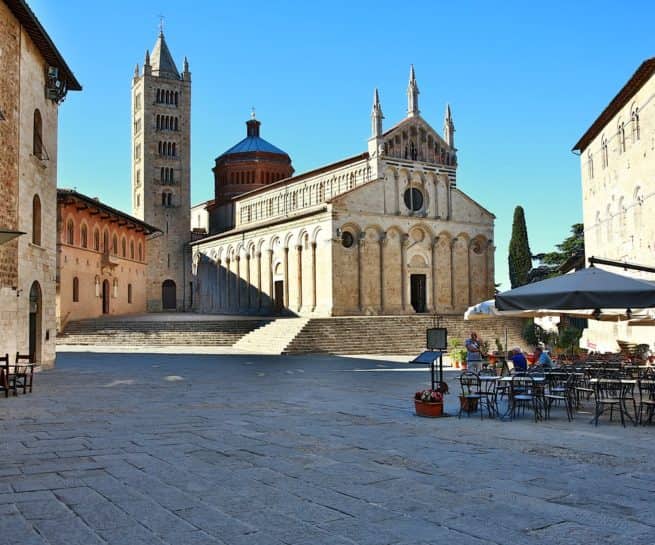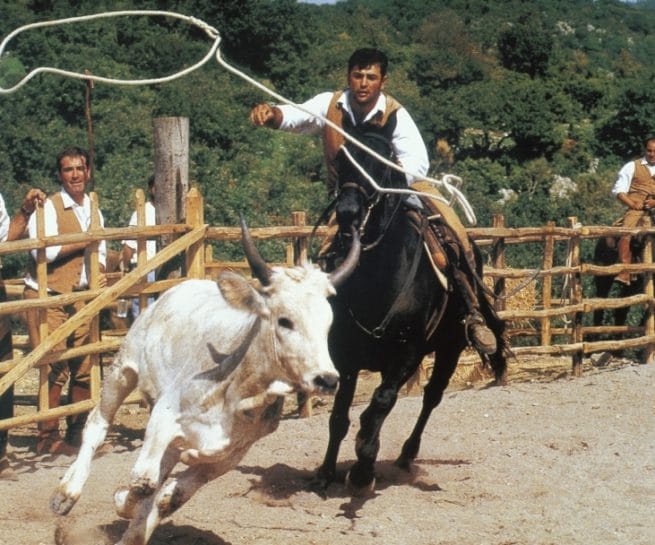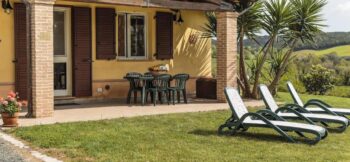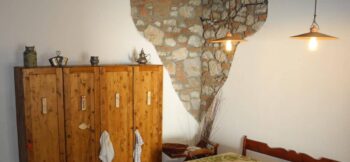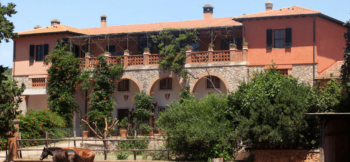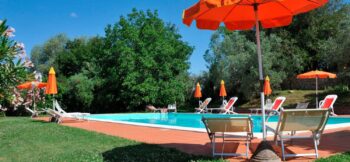The three districts are: Cittanuova (with the colors white, red and green), Cittavecchia (with the colors white, black and yellow) and Borgo (with the colors yellow gold, blue and red). Each Terziere is represented by 8 crossbowmen, so that 24 crossbowmen participate in the challenge.
The Balestro includes two fundamental moments: the first on the Saturday before the Sunday in which the challenge is held and the second on the Sunday of the actual competition.
The draw takes place on Saturday. In the Palazzo Comunale, in fact, in the presence of the Municipal Authorities, the Società dei Terzieri and the Terzieri themselves, the firing order is drawn. Usually, the Terziere who is lucky enough to shoot first, has a considerable advantage, due to the fact that the target (dogwood) on the first shot is completely free. The order of shooting is presented with the display of the flags of the three Terzieri on the facade of the Town Hall, in the order of draw.
The following Sunday, the day of the challenge, the main part of the whole Balestro takes place. It begins with the historical parade that winds along the medieval streets of the town. The procession starts from the headquarters of the Società dei Terzieri, from which the figures of the Free Municipality move, with the Banner and the Palio that will go to the winning Terziere. As it progresses, the procession reaches the various premises of the Terzieri, where, from time to time, to the sound of the trumpets and the roll of the drummers, the representatives of the same join the parade. The route ends with the entrance to the square, where all the participants take their places under the eyes of the public, waiting for the flag-wavers to perform their mastery exercises with flags.
After the show of the flags, the trumpets and drummers announce the intervention of the Herald, who reads the announcement and declares the opening of the contest.
Each crossbowman competes with his own crossbow (of the ancient Italian type, as was customary in the 15th century). The crossbow is almost always personal and specially calibrated for its crossbowman. It consists of a wooden frame called teniere to which the steel arch is fixed. The rope is made of natural fiber. The weapon is loaded with a special jack with the walker. The taut rope stops on a rotating cylinder controlled by the trigger lever.
To execute the shot, the crossbowman loads his weapon, places the arrow ready to shoot and, after settling on the shooting station and taking aim, shoots the arrow at the dogwood, which is 36 meters away.
The dogwood has a truncated cone shape and has about 13 cm in diameter and protrudes by 42 cm from a circular base also in wood and with a diameter of 50 cm. It is black, except for the part constituting the actual target, which is white. The center of the target is called a cue ball and is colored black.
The shooter who approaches the ball most of all, brings the victory to his own district to whom the Palio (or Drappellone) of silk painted each time by a different artist will go. The winning crossbowman gets a symbolic golden arrow as a prize. When a Terziere manages to win by occupying the first three positions, he is said to have made a coat.
The Balestro has its roots in the early 14th century, when, according to well documented historical information, the use of the crossbow was practiced with particular care in the Free Municipality and competitions were held between shooters equipped with crossbows.
The Costitutum Civitatis Massae of the early ‘300 speaks of the Magister Balistrarum (Master of the Crossbows) and of the Camerario, keeper of the crossbows and other weapons of the city. Another testimony is made up of a parchment dated 2 August 1497.
But, certainly, much more important is the resolution of the Major Council of 1476 (Statutorum Mag. Civitatis Massae, pars IIa, Distintio IIa, Anno Domini 1476 die X, Augusti) which reads: “In General Council cum adiuncta Communis et Populi Civitatis Massae , servatis solemnitatis opportunis. In presentia cum dignissimum Potestatem et Capitanum Civitatis Massae STATUIMUS, Rub. That a crossbow should be sprung every three months. months, crossbowing three times each time, this is on three days of public holidays, and whoever in those three days will have more hits is given to him a steel crossbow with a walker being Massetan and a resident in Massa and not to others and of this crossbow two pay the Municipality of Massa and the other two the Power, that is each Power one and in this way the young people will be freed from hunting and sent to the laudatory exercise of the crossbow, to be able to ex be useful in the cases and times required “.
In 1959 in Massa Marittima, by the will of some citizens of Massa, eager to recall the ancient glories of the Free Municipality, the Society of Terzieri Massetani was born (currently based in the medieval Palazzina della Zecca), with the aim of recalling and keeping alive the ancient exercise of the art of the crossbow.
The club decided that two competitions should be held each year (except for extraordinary editions on the occasion of particular events): the first on the fourth Sunday of May (May 20 is San Bernardino’s day) and the second on the second Sunday of August. , unless it is moved to coincide with other events on the first following holiday, as per the Statute of the third party company. The May race is in honor of San Bernardino degli Albizzeschi better known as San Bernardino da Siena (co-patron of Massa Marittima who gave him birth), while the one in August commemorates the establishment of the Free Municipality which took place on 31/7/1225. The Company, in 1965, joined the Italian Crossbowmen Federation (F.I.B.). The 100th edition was reached with the Balestro on 25 May 2008.
The Balestro del Girifalco, is one of the major historical re-enactments of Italian crossbow shooting that take place on the Italian territory. Others take place in Lucca and in the Republic of San Marino.
On February 13, 1966, in Arezzo, the delegations of the ancient cities of Massa Marittima, Sansepolcro, Gubbio and San Marino, met to form the Italian National Federation of Crossbowmen, with the aim of preserving and safeguarding the ancient traditions of shooting with the ancient crossbow. Italian style, practiced by the respective cities. The city of Lucca was admitted to join the Federation on April 9, 1972.
In 2010 the Crossbowmen Society of Sansepolcro and the Crossbowman Society of Gubbio left the Federation.
Each year the Federation holds a national tournament between the three federated cities in rotation in each of them.
Massa Marittima has the right to representation in the historical procession of the Palio di Siena, where, at each Palio, it sends four representatives: one for the Municipality (the Capitano del Popolo), and one for each Terziere (three crossbowmen with the crossbow on their shoulders). .


